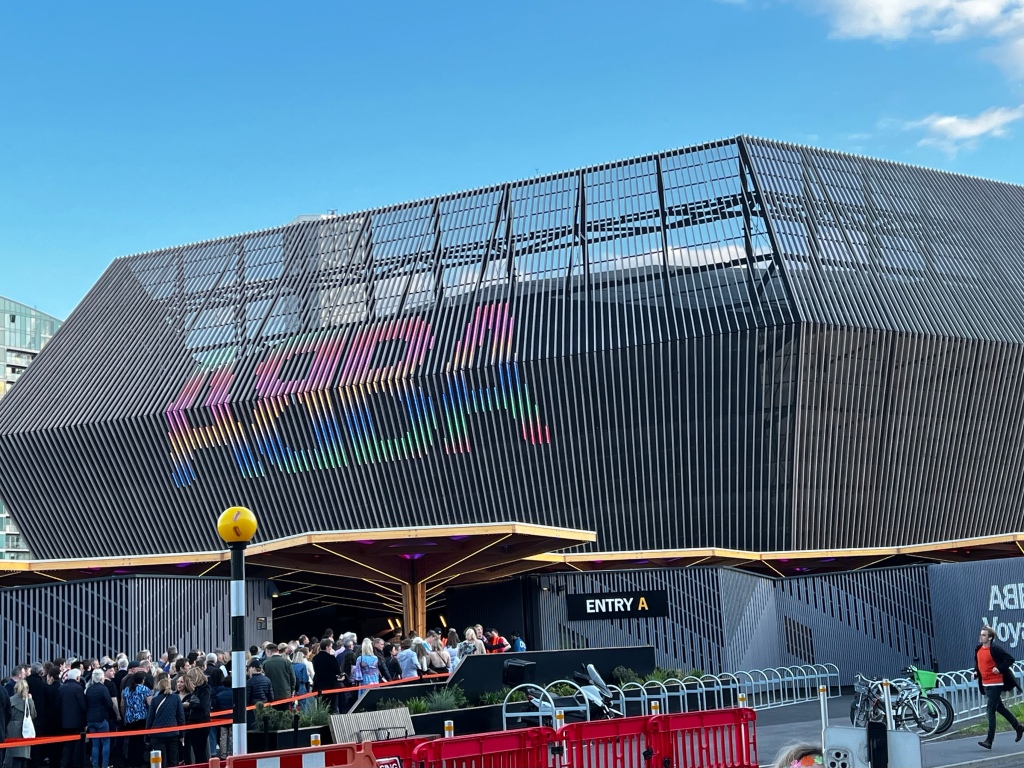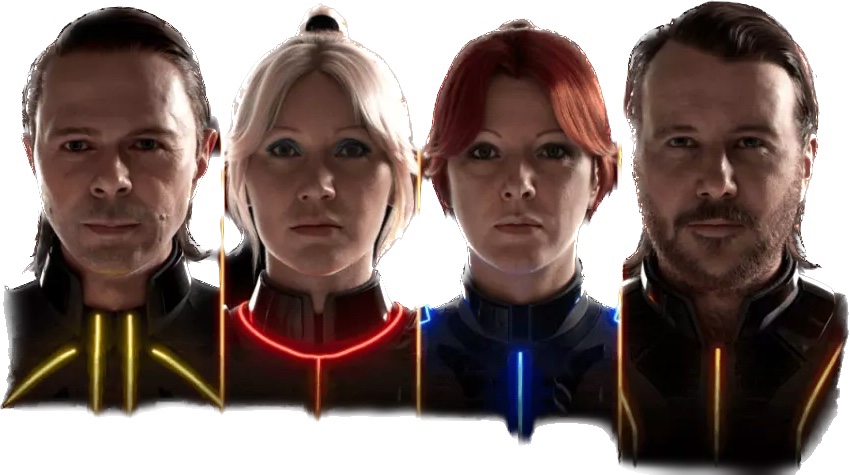Trip 42
Day 10 May 4, 2023
ABBA, a Swedish music supergroup from the 70’s certainly had a career that is aptly captured in its album’s name “Voyage”. Voyage is their first album in 40 years (issued in 2021), having broken up in 1982. The group last performed in London in 1979. Think about our own “voyage” through life and the twists and turns and unexpected events we all go through and multiply that with two Swedish couples who came together to form the group (ABBA is an acronym, arranged as a palindrome , of the first letters of their first names). Then come together to perform a virtual concert as they were 40+ years ago.
Many music groups that come together don’t last long , whether it’s the pressures of touring, interpersonal relationships, or artistic differences, or the success of their music. ABBA stayed together for 10 years before breaking up, and then regrouping for Voyage and creating the virtual concert in a purpose built arena. They reunited in 2016 and started the project that took five years (and an album) that led to a concert residency featuring ABBA as virtual avatars, opening in May 2022 in London. By April 2023, they’d sold over 1m tickets in less than 12 months. The ABBA Voyage virtual concert series is currently set to run in London into 2024, with plans reported for the experience to be taken on a world tour.
The venue was out in the Canary Wharf area, about an hour by Tube and DLR for us. Sited close to the Pudding Mill Lane DLR station, the structure has been designed as a demountable, collapsible, temporary venue, which is able to be relocated to another site at the end of its five-year tenure in east London.

Some of the concert attendees dressed for the era, with 70’s attire. They were there to have fun. Celebrating fun music, from a different age, but the fans included those who weren’t even born when the band broke up.
It’s a virtual concert. There is a live band off to stage left, but the four members of ABBA appear virtually, as the age they were (presumably) at their peak in 1977. The four band members, who are now in their seventies, spent many hours performing for the motion-capture cameras to appear as lifelike as possible. It’s not a large audience, with around 1650 seats and 1350 standing room (the Dance Floor), so around 3,000 in the audience, and it was sold out. The theatre darkens, your eyes adjust, the willing suspension of disbelief kicks in, and they begin to feel like living, breathing musicians, rather than the product of 160 motion capture cameras and one billion computing hours by Industrial Light & Magic. The ABBA band members wore motion-capture suits as part of the development process and were filmed as they performed a 22-song set over the course of five weeks. Some 160 cameras were used, with graphics later added by Industrial Light & Magic. The choreography is based on the band members’ real movements, but captured from younger body doubles. 1,000 animators worked on digitising footage to create the avatars. There are almost 300 surround sound speakers in the 3,000-capacity venue. And the whole venture cost around £140 million ($175m) to produce.
The dancing, the playing, the mic stands, the interplay between them is entirely believable. The ABBAtars look, absolutely real, like -you-can’t-believe-your-eyes real. These aren’t holograms, they aren’t 3D, they are 2D renders of 3D models life-size on video screens. ABBA Voyage is therefore not actually a hologram concert at all, but it is the first of its kind as it blurs the lines between physical and digital

While the setlist for ABBA Voyage has remained the same since it first opened, Ulvaeus revealed that they did work on more songs that could work their way into future iterations of the show. “We did motion capture more songs that we have in this concert,” he said. “There are songs in the pipeline which might be animated and ‘ABBA-tarred’ in the future.
ABBA appear standing together maybe 50’ or so from the Dance Floor barricade , so I doubt even those at the front of the barricade could see the individuals more clearly than we could (we had good seats higher up -no “Dance Floor” for us) and the performance is shown on large screens in front and to each side of the stage. A 65 meter tall (214’) screen wraps around most of the venue. It’s a truly immersive, multimedia “experience” , with projection screens that move in and out, project along the side walls of the theatre, mirrors and special effects move up and down from the ceiling, changing colors, along with lighting effects. Standing on the stage , they might perform together or highlight one member singing and dancing. The show sees CGI reincarnations (or ‘ABBA-tars’) based on the movements and performance of the living Swedish pop legends. These are then painstakingly presented to appear to be playing live with the appearance of the band in their ’70s prime, backed by a full live band.
Considering the venue, there was to be no photography and we saw several security staff, one ran up to the seats right in front of us to warn a couple (actually taking a selfie , not a photo of the show) about photos. They didn’t catch mine though 😉 (just a couple, ok?)


The music and performances were all great and very realistic, but did seem to lack the spontaneity of in-person live performances and of course, can’t have the audience interaction you sometimes see between the artists and audiences. The virtual band do indeed take “breaks”, as each member addresses the audience individually, with Benny Anderson’s younger self addressing the “to be or not to be” nature of the virtual performers, and Bjorn pretending to have a costume change.
At the end, the members of the band “appear” together as they are now to thank the audience. Both they and their music have aged well. It has to be a bit mindblowing for them to look at themselves as they were ~46 years ago performing into the 21st century, a “voyage “ of the mind, crossing generations.
